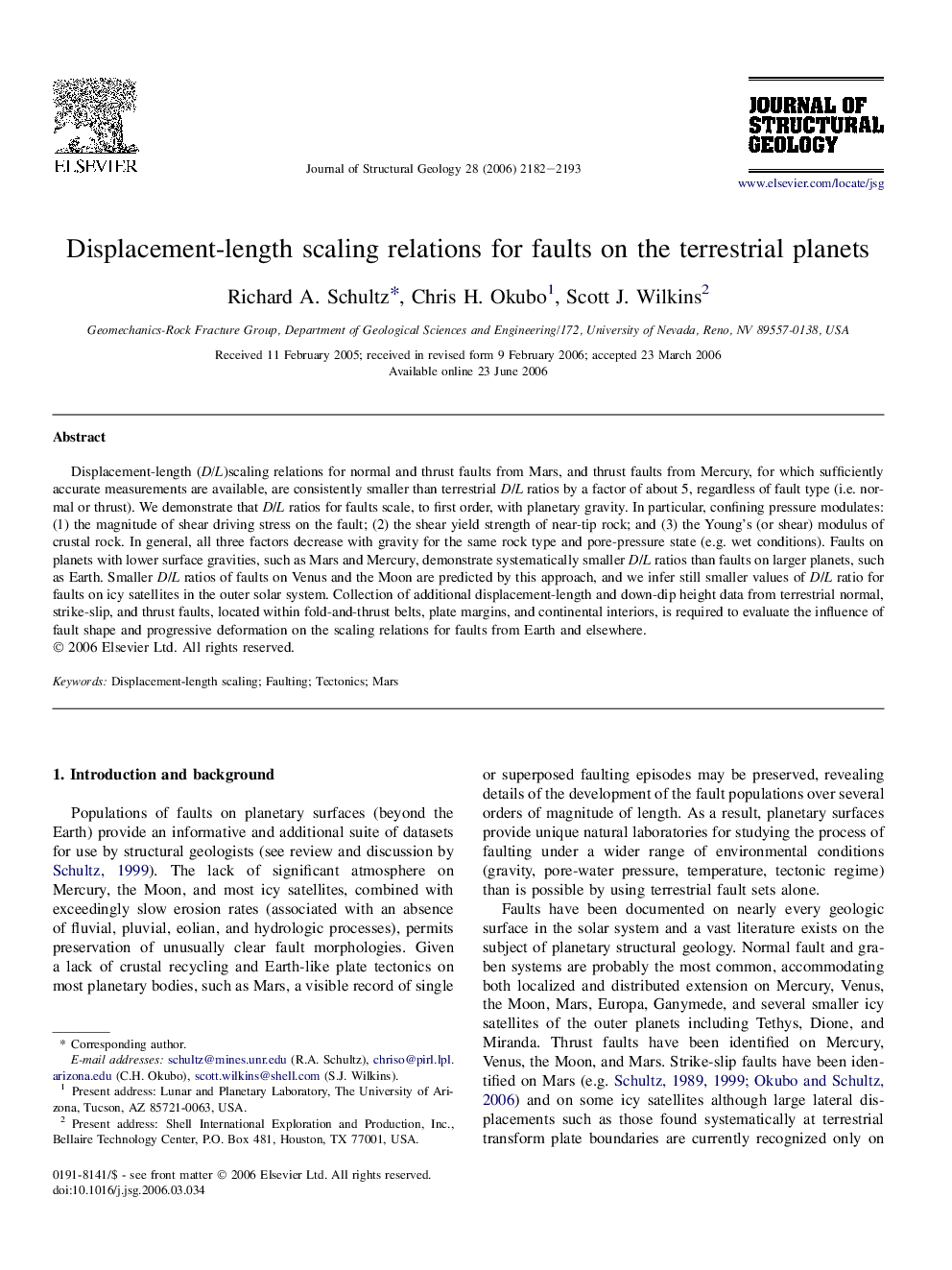| Article ID | Journal | Published Year | Pages | File Type |
|---|---|---|---|---|
| 4734467 | Journal of Structural Geology | 2006 | 12 Pages |
Displacement-length (D/L)scaling relations for normal and thrust faults from Mars, and thrust faults from Mercury, for which sufficiently accurate measurements are available, are consistently smaller than terrestrial D/L ratios by a factor of about 5, regardless of fault type (i.e. normal or thrust). We demonstrate that D/L ratios for faults scale, to first order, with planetary gravity. In particular, confining pressure modulates: (1) the magnitude of shear driving stress on the fault; (2) the shear yield strength of near-tip rock; and (3) the Young's (or shear) modulus of crustal rock. In general, all three factors decrease with gravity for the same rock type and pore-pressure state (e.g. wet conditions). Faults on planets with lower surface gravities, such as Mars and Mercury, demonstrate systematically smaller D/L ratios than faults on larger planets, such as Earth. Smaller D/L ratios of faults on Venus and the Moon are predicted by this approach, and we infer still smaller values of D/L ratio for faults on icy satellites in the outer solar system. Collection of additional displacement-length and down-dip height data from terrestrial normal, strike-slip, and thrust faults, located within fold-and-thrust belts, plate margins, and continental interiors, is required to evaluate the influence of fault shape and progressive deformation on the scaling relations for faults from Earth and elsewhere.
